Are Lao Chai And Ta Van Often Visited Together On Treks? Absolutely, Lao Chai and Ta Van are frequently combined in trekking itineraries, offering an immersive experience into Vietnam’s Sapa region. SIXT.VN understands the allure of these villages, crafting tours that showcase the cultural richness and natural beauty of Vietnam. By choosing SIXT.VN, travelers can explore stunning landscapes, cultural experiences, and local interactions.
1. What Makes Lao Chai and Ta Van Popular Trekking Destinations?
Lao Chai and Ta Van stand out as popular trekking destinations due to their stunning natural beauty, cultural richness, and accessibility. Located in the Sapa region of Vietnam, these villages offer visitors an opportunity to immerse themselves in the unique lifestyles of the local ethnic communities. According to the Vietnam National Administration of Tourism, Sapa has seen a steady increase in tourism, with Lao Chai and Ta Van being key attractions. The popularity of these treks is also attributed to the breathtaking views of terraced rice fields and the warm hospitality of the local people.
1.1. Breathtaking Scenery
The terraced rice fields in Lao Chai and Ta Van are renowned for their picturesque beauty, especially during the planting and harvesting seasons. Trekkers are often captivated by the vibrant green landscapes that stretch across the hillsides. The unique topography of the region, combined with the agricultural practices of the local communities, creates a stunning visual spectacle.
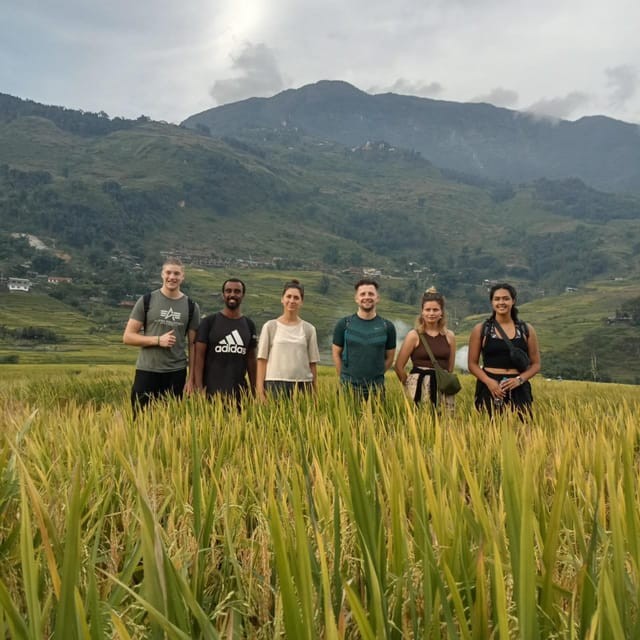 Terraced Rice Fields in Sapa
Terraced Rice Fields in Sapa
1.2. Cultural Immersion
Lao Chai and Ta Van are home to the Hmong, Dzao, and Zay ethnic groups, each with its own distinct culture, traditions, and clothing. Trekking through these villages provides an opportunity to interact with the locals, learn about their customs, and witness their daily lives. This cultural immersion is a significant draw for many tourists seeking an authentic experience.
1.3. Accessible Trekking Routes
Compared to other more challenging treks in the region, the routes connecting Lao Chai and Ta Van are relatively accessible. They are suitable for a wide range of fitness levels, making them popular among both experienced trekkers and beginners. The trails are well-maintained and offer varying levels of difficulty, catering to different preferences.
1.4. Authentic Local Interactions
One of the most appealing aspects of trekking in Lao Chai and Ta Van is the opportunity for genuine interactions with the local communities. Visitors can participate in local activities, such as weaving and farming, and share meals with the families. These interactions provide valuable insights into the local culture and create lasting memories.
1.5. Eco-Tourism Initiatives
The Sapa region has seen a rise in eco-tourism initiatives aimed at preserving the environment and supporting local communities. Trekking tours often incorporate sustainable practices, such as minimizing waste and promoting responsible tourism. This commitment to sustainability enhances the appeal of Lao Chai and Ta Van as destinations for environmentally conscious travelers.
2. What Kind of Experiences Can You Expect on a Trek Combining Lao Chai and Ta Van?
When embarking on a trek that combines Lao Chai and Ta Van, you can anticipate a rich blend of scenic beauty, cultural immersion, and physical activity. These treks are designed to provide a holistic experience, allowing you to connect with nature, learn about local traditions, and challenge yourself physically. According to a study by TripAdvisor, travelers often highlight the cultural experiences and scenic beauty as the most memorable aspects of their treks in Sapa.
2.1. Scenic Treks
The journey from Lao Chai to Ta Van is characterized by breathtaking views of terraced rice fields, lush valleys, and towering mountains. The trails wind through picturesque landscapes, offering numerous opportunities for photography and appreciation of the natural beauty. The views are particularly stunning during sunrise and sunset, when the colors of the sky reflect off the rice paddies.
 Trekking through Sapa's Rice Terraces
Trekking through Sapa's Rice Terraces
2.2. Cultural Encounters
Along the way, you will encounter members of the Hmong, Dzao, and Zay communities, dressed in their traditional attire. These encounters provide insights into their unique cultures, customs, and ways of life. You may have the opportunity to visit local homes, learn about traditional crafts, and even participate in local festivals if your visit coincides with one.
2.3. Physical Challenges
While the treks are generally accessible, they do involve some physical challenges. The trails can be steep and uneven in places, requiring a moderate level of fitness. However, the sense of accomplishment and the stunning views along the way make the effort worthwhile. It’s advisable to wear sturdy hiking shoes and bring plenty of water to stay hydrated.
2.4. Local Cuisine
Many trekking tours include meals prepared with local ingredients, providing a taste of the regional cuisine. You can savor dishes such as bamboo rice, fresh spring rolls, and locally sourced vegetables and meats. Sharing meals with local families is a great way to learn about their food culture and traditions.
2.5. Educational Opportunities
Trekking through Lao Chai and Ta Van offers educational opportunities to learn about the history, culture, and environment of the Sapa region. Local guides often share information about the traditional farming practices, the local flora and fauna, and the challenges faced by the local communities. This educational aspect enriches the trekking experience and fosters a deeper appreciation for the region.
3. How Long Does a Typical Trek to Lao Chai and Ta Van Take?
A typical trek to Lao Chai and Ta Van can vary in length, but it generally ranges from a half-day to a full-day excursion, depending on the specific route and your pace. For those looking to fully immerse themselves in the experience, multi-day treks are also available, allowing for a more comprehensive exploration of the area. According to Booking.com, the average duration of a guided trek in Sapa is around 6-8 hours, with Lao Chai and Ta Van being popular destinations.
3.1. Half-Day Trek (3-4 Hours)
A half-day trek is suitable for those with limited time or those who prefer a less strenuous activity. This option typically involves a shorter loop that covers the main highlights of Lao Chai and Ta Van, such as the terraced rice fields and the local villages. It’s a great way to get a taste of the region’s beauty and culture without committing to a full day of hiking.
3.2. Full-Day Trek (6-8 Hours)
A full-day trek provides a more in-depth exploration of Lao Chai and Ta Van. It allows you to venture further into the surrounding landscapes, visit more remote villages, and spend more time interacting with the locals. This option is ideal for those who want to fully immerse themselves in the trekking experience and gain a deeper understanding of the region.
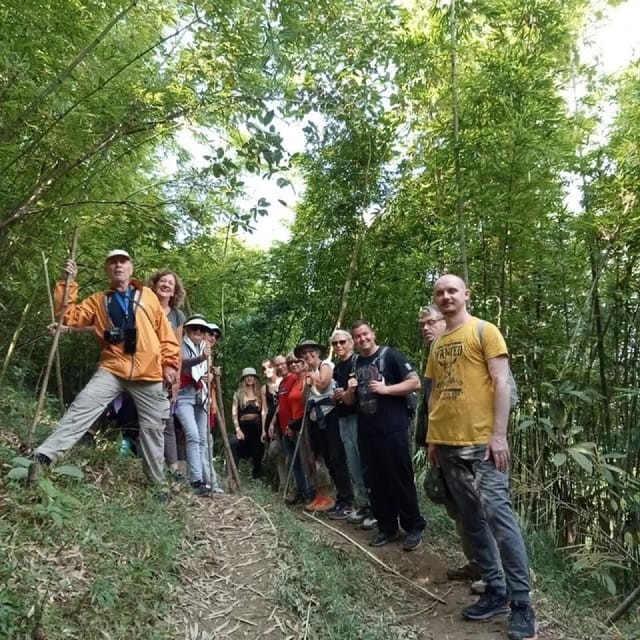 Exploring Villages on a Sapa Trek
Exploring Villages on a Sapa Trek
3.3. Multi-Day Trek (2-3 Days)
For the adventurous traveler, a multi-day trek offers the opportunity to explore Lao Chai and Ta Van at a more leisurely pace. These treks often include overnight stays in local homestays, providing a unique glimpse into the daily lives of the ethnic communities. Multi-day treks allow you to cover more ground, discover hidden gems, and truly connect with the region.
3.4. Factors Influencing Trek Duration
Several factors can influence the duration of your trek, including your fitness level, the weather conditions, and the specific route you choose. It’s essential to consider these factors when planning your trek and to choose an option that aligns with your abilities and preferences.
3.5. Guided vs. Independent Treks
The duration of your trek can also depend on whether you choose to go with a guided tour or trek independently. Guided tours often follow a set itinerary and pace, while independent treks offer more flexibility in terms of timing and route. However, guided tours provide the added benefit of local knowledge and support, which can be particularly valuable for first-time trekkers.
4. What Are the Best Times of the Year to Trek in Lao Chai and Ta Van?
The best times of the year to trek in Lao Chai and Ta Van are during the dry seasons, which typically run from March to May and from September to November. These months offer pleasant weather conditions, clear skies, and stunning views of the terraced rice fields. According to the Vietnam Meteorological Agency, these periods are characterized by lower rainfall and comfortable temperatures, making them ideal for outdoor activities.
4.1. March to May (Spring)
Spring is a beautiful time to trek in Lao Chai and Ta Van, as the weather is mild and the landscapes are lush and green. The rice paddies are often filled with water, creating a mirror-like effect that reflects the surrounding mountains and sky. This is also the planting season, so you can witness the local farmers at work in the fields.
4.2. September to November (Autumn)
Autumn is another excellent time to visit, as the rice fields turn golden yellow in preparation for harvest. The weather is cool and dry, making for comfortable trekking conditions. The clear skies offer unobstructed views of the surrounding mountains and valleys. This is also a popular time for festivals and cultural events, providing opportunities to experience the local traditions.
 Golden Rice Fields in Sapa during Autumn
Golden Rice Fields in Sapa during Autumn
4.3. Avoiding the Rainy Season (June to August)
The rainy season in Sapa typically occurs from June to August. During this time, the weather can be unpredictable, with heavy rainfall, thunderstorms, and occasional landslides. Trekking during the rainy season can be challenging and even dangerous, as the trails can become slippery and the views can be obscured by fog and clouds.
4.4. Winter Months (December to February)
The winter months in Sapa can be cold and foggy, with temperatures occasionally dropping below freezing. While the landscapes can be beautiful with frost and snow, trekking during this time can be challenging due to the cold and slippery conditions. It’s essential to be prepared with warm clothing and appropriate gear if you plan to trek during the winter.
4.5. Seasonal Considerations for Photography
For photographers, the best times to visit Lao Chai and Ta Van are during the planting and harvesting seasons, when the rice fields are at their most visually stunning. The vibrant green landscapes of spring and the golden hues of autumn offer unique opportunities to capture breathtaking images.
5. What Cultural Etiquette Should You Be Aware of When Visiting Lao Chai and Ta Van?
When visiting Lao Chai and Ta Van, it’s essential to be mindful of the local culture and customs. Showing respect for the local communities and their traditions can enhance your trekking experience and foster positive relationships. According to a guide by the Responsible Travel Portal, understanding and adhering to cultural etiquette is crucial for sustainable tourism.
5.1. Dress Modestly
When visiting local villages, it’s advisable to dress modestly to show respect for the local culture. Avoid wearing revealing clothing or swimwear, and opt for comfortable, loose-fitting attire. Covering your shoulders and knees is generally appreciated.
5.2. Ask Permission Before Taking Photos
Before taking photos of local people or their homes, always ask for permission first. Some people may be uncomfortable with having their picture taken, while others may be happy to pose for you. Respecting their wishes is essential.
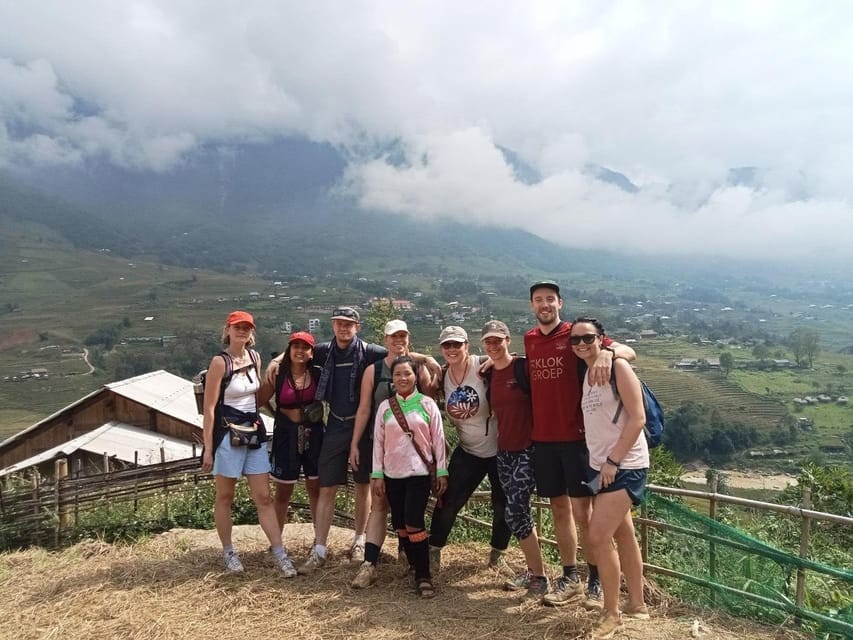 Interacting with Locals in Sapa
Interacting with Locals in Sapa
5.3. Be Mindful of Noise Levels
When visiting local villages, be mindful of noise levels and avoid making excessive noise that could disrupt the peace and tranquility of the community. Speak softly and avoid playing loud music.
5.4. Respect Sacred Sites
If you visit any sacred sites, such as temples or shrines, be sure to remove your shoes and dress appropriately. Follow any instructions or guidelines provided by the local caretakers.
5.5. Support Local Businesses
One of the best ways to support the local communities is to purchase goods and services from local businesses. This can include buying handicrafts, eating at local restaurants, and staying in local homestays.
5.6. Learn a Few Basic Phrases
Learning a few basic phrases in the local language can go a long way in showing respect and building rapport with the local people. Simple greetings like “hello” and “thank you” can be greatly appreciated.
6. What Type of Accommodation Options Are Available in Lao Chai and Ta Van?
In Lao Chai and Ta Van, you’ll find a range of accommodation options to suit different preferences and budgets. From cozy homestays that offer an immersive cultural experience to comfortable hotels with modern amenities, there’s something for everyone. According to statistics from Agoda, homestays are increasingly popular among tourists seeking authentic cultural experiences in Sapa.
6.1. Homestays
Homestays are the most popular accommodation option in Lao Chai and Ta Van, offering a unique opportunity to stay with local families and experience their daily lives. These homestays typically provide basic but comfortable rooms, traditional meals, and opportunities to participate in local activities. Staying in a homestay is a great way to learn about the local culture and support the local economy.
6.2. Guesthouses
Guesthouses offer a step up in comfort and amenities compared to homestays. These establishments typically provide private rooms with ensuite bathrooms, as well as common areas for socializing with other travelers. Guesthouses can be a good option for those who want a bit more privacy and comfort while still enjoying a local experience.
6.3. Hotels
In recent years, several hotels have opened in Lao Chai and Ta Van, offering modern amenities and services. These hotels typically provide comfortable rooms with air conditioning, private bathrooms, and on-site restaurants. Hotels can be a good option for those who prefer a more traditional hotel experience and are willing to pay a bit more for comfort and convenience.
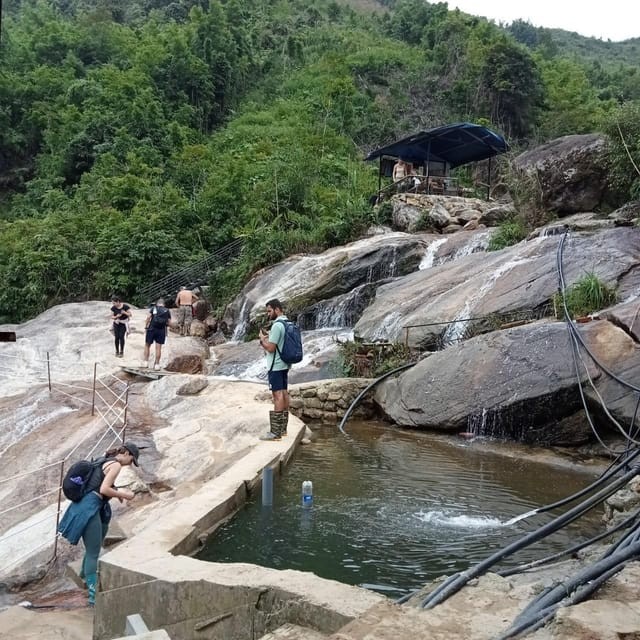 Local Homestay in Sapa
Local Homestay in Sapa
6.4. Eco-Lodges
For environmentally conscious travelers, eco-lodges offer a sustainable and responsible accommodation option. These lodges are designed to minimize their impact on the environment and often incorporate eco-friendly practices such as using renewable energy, conserving water, and supporting local conservation efforts.
6.5. Factors to Consider When Choosing Accommodation
When choosing accommodation in Lao Chai and Ta Van, it’s important to consider factors such as your budget, your comfort preferences, and your desire for cultural immersion. Homestays offer the most authentic cultural experience, while hotels provide the most comfort and convenience. Guesthouses and eco-lodges offer a balance between the two.
7. What Are Some Essential Items to Pack for a Trek to Lao Chai and Ta Van?
Packing the right gear is essential for a comfortable and enjoyable trek to Lao Chai and Ta Van. The weather in Sapa can be unpredictable, so it’s important to be prepared for a range of conditions. According to a checklist by the Adventure Travel Trade Association, packing essentials can significantly impact the trekking experience.
7.1. Comfortable Hiking Shoes
Sturdy and comfortable hiking shoes are a must for navigating the trails in Lao Chai and Ta Van. Choose shoes that provide good ankle support and traction, and make sure to break them in before your trek to avoid blisters.
7.2. Warm Clothing
The weather in Sapa can be cool, especially in the evenings and during the winter months. Pack layers of warm clothing, including a fleece jacket, a sweater, and a waterproof outer layer.
7.3. Rain Gear
Rain is common in Sapa, even during the dry season, so it’s important to pack rain gear such as a waterproof jacket and pants, or a poncho.
7.4. Sun Protection
Even on cloudy days, the sun can be strong at high altitudes. Pack sunscreen, sunglasses, and a hat to protect yourself from the sun’s harmful rays.
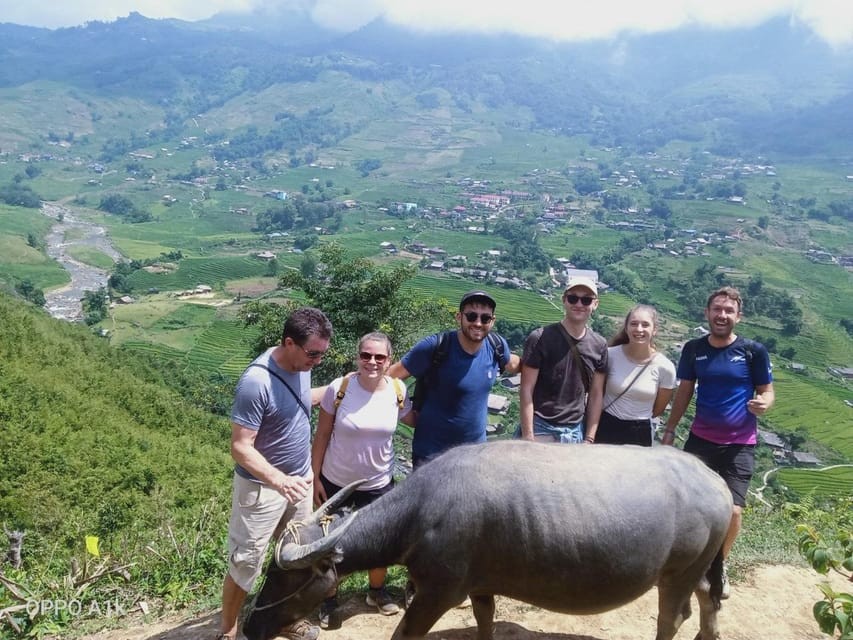 Preparing for a Trek in Sapa
Preparing for a Trek in Sapa
7.5. Insect Repellent
Mosquitoes and other insects can be prevalent in Sapa, especially during the rainy season. Pack insect repellent to protect yourself from bites.
7.6. First-Aid Kit
Pack a basic first-aid kit with essentials such as bandages, antiseptic wipes, pain relievers, and any personal medications you may need.
7.7. Water Bottle
Staying hydrated is essential during your trek. Bring a reusable water bottle and fill it up whenever possible.
7.8. Camera
You’ll want to capture the stunning scenery and cultural experiences during your trek, so don’t forget to pack your camera.
8. Are There Any Specific Health Precautions to Consider Before Trekking?
Before embarking on a trek to Lao Chai and Ta Van, it’s important to consider certain health precautions to ensure a safe and enjoyable experience. Consulting with your doctor and taking necessary preventive measures can help you avoid potential health issues. According to the World Health Organization, it is recommended that travelers consult with a healthcare professional 4-6 weeks before traveling to get personalized health advice.
8.1. Consult Your Doctor
Before traveling to Sapa, especially if you have any underlying health conditions, consult your doctor to get their advice on any necessary vaccinations or medications. They may recommend certain vaccinations, such as hepatitis A and typhoid, as well as malaria prophylaxis.
8.2. Altitude Sickness
Sapa is located at a relatively high altitude, so it’s important to be aware of the risk of altitude sickness. Symptoms of altitude sickness can include headache, nausea, fatigue, and shortness of breath. To prevent altitude sickness, acclimatize gradually to the altitude, drink plenty of water, and avoid alcohol and strenuous activity in the first few days.
8.3. Food and Water Safety
To avoid foodborne illnesses, be careful about what you eat and drink in Sapa. Drink only bottled or boiled water, and avoid eating raw or undercooked foods. Choose restaurants and food stalls that appear clean and hygienic.
 Staying Healthy on a Sapa Trek
Staying Healthy on a Sapa Trek
8.4. Sun Protection
The sun can be strong at high altitudes, so it’s important to protect yourself from sunburn. Wear sunscreen, sunglasses, and a hat, and avoid prolonged exposure to the sun during the hottest part of the day.
8.5. Insect Bites
Mosquitoes and other insects can transmit diseases such as malaria and dengue fever. Protect yourself from insect bites by wearing long sleeves and pants, using insect repellent, and sleeping under a mosquito net.
8.6. Travel Insurance
It’s always a good idea to purchase travel insurance before traveling to a foreign country. Make sure your insurance policy covers medical expenses, trip cancellations, and other unforeseen events.
9. How Can SIXT.VN Enhance Your Trekking Experience in Sapa?
SIXT.VN offers a range of services to enhance your trekking experience in Sapa, ensuring a convenient, comfortable, and memorable trip. From airport transfers to customized tour packages, SIXT.VN takes care of all the details so you can focus on enjoying your adventure. According to customer reviews, SIXT.VN’s personalized service and attention to detail have made it a top choice for travelers visiting Vietnam.
9.1. Airport Transfers
SIXT.VN provides reliable and comfortable airport transfer services, ensuring a seamless transition from the airport to your hotel in Sapa. Their professional drivers will meet you at the airport and transport you safely and efficiently to your destination.
9.2. Hotel Booking
SIXT.VN offers a wide selection of hotels in Sapa to suit different preferences and budgets. Whether you’re looking for a cozy homestay, a comfortable guesthouse, or a luxurious hotel, SIXT.VN can help you find the perfect accommodation.
9.3. Customized Tour Packages
SIXT.VN specializes in creating customized tour packages that cater to your specific interests and needs. Whether you want to focus on trekking, cultural immersion, or culinary experiences, SIXT.VN can design a tour that’s perfect for you.
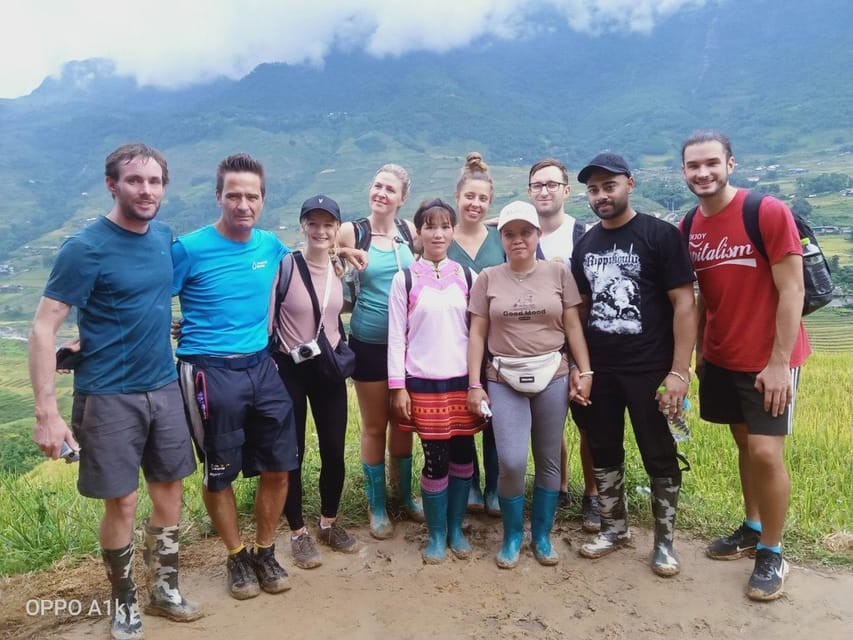 SIXT.VN Services for Travelers in Sapa
SIXT.VN Services for Travelers in Sapa
9.4. Local Guides
SIXT.VN works with experienced local guides who are knowledgeable about the history, culture, and environment of Sapa. Their guides can provide valuable insights and enhance your trekking experience.
9.5. 24/7 Support
SIXT.VN offers 24/7 support to assist you with any questions or concerns you may have during your trip. Their dedicated team is always available to provide assistance and ensure a smooth and hassle-free experience. Address: 260 Cau Giay, Hanoi, Vietnam. Hotline/Whatsapp: +84 986 244 358. Website: SIXT.VN.
10. What Are Some Alternative Trekking Routes Near Lao Chai and Ta Van?
While Lao Chai and Ta Van are popular trekking destinations, there are several alternative routes in the Sapa region that offer unique and rewarding experiences. Exploring these less-traveled paths can provide a different perspective on the area’s natural beauty and cultural richness. According to local trekking guides, these alternative routes often offer more secluded and authentic experiences.
10.1. Cat Cat Village Trek
Cat Cat Village is a Hmong village located near Sapa town. The trek to Cat Cat Village is relatively short and easy, making it a good option for those with limited time or those who prefer a less strenuous activity. The village is known for its traditional Hmong culture, its scenic waterfall, and its hydroelectric power station.
10.2. Sin Chai Village Trek
Sin Chai Village is another Hmong village located near Sapa town. The trek to Sin Chai Village is slightly more challenging than the trek to Cat Cat Village, but it offers stunning views of the surrounding mountains and valleys. The village is known for its traditional Hmong houses, its terraced rice fields, and its friendly locals.
10.3. Y Linh Ho Village Trek
Y Linh Ho Village is located in the Muong Hoa Valley, near Lao Chai and Ta Van. The trek to Y Linh Ho Village is a good option for those who want to explore the Muong Hoa Valley but prefer a less crowded route. The village is known for its scenic rice terraces, its traditional Hmong houses, and its peaceful atmosphere.
10.4. Giang Ta Chai Village Trek
Giang Ta Chai Village is a Red Dzao village located near Ta Van. The trek to Giang Ta Chai Village is a good option for those who want to learn about the Red Dzao culture. The village is known for its traditional Red Dzao clothing, its herbal medicine practices, and its scenic waterfall.
10.5. Fansipan Peak Trek
For experienced trekkers, the trek to Fansipan Peak, the highest mountain in Indochina, is a challenging but rewarding experience. The trek typically takes 2-3 days and requires a good level of fitness. The summit offers stunning views of the surrounding mountains and valleys.
10.6. Choosing the Right Trek for You
When choosing a trekking route in the Sapa region, it’s important to consider your fitness level, your interests, and your time constraints. Whether you prefer a short and easy trek or a challenging multi-day adventure, there’s a route that’s perfect for you.
FAQ: Lao Chai and Ta Van Treks
1. Is It Safe to Trek in Lao Chai and Ta Van?
Yes, trekking in Lao Chai and Ta Van is generally safe. However, it’s advisable to go with a reputable tour operator or hire a local guide to ensure your safety and well-being.
2. What Is the Cost of a Trek to Lao Chai and Ta Van?
The cost of a trek to Lao Chai and Ta Van can vary depending on the duration, the type of tour, and the inclusions. A typical day trek can cost anywhere from $20 to $50 per person.
3. Do I Need a Visa to Visit Sapa?
Most foreign visitors need a visa to enter Vietnam. Check the visa requirements for your nationality before traveling.
4. What Currency Is Used in Sapa?
The currency used in Sapa is the Vietnamese Dong (VND). It’s advisable to exchange your currency for VND before traveling to Sapa.
5. What Is the Internet Connectivity Like in Lao Chai and Ta Van?
Internet connectivity in Lao Chai and Ta Van can be limited. Some hotels and guesthouses offer Wi-Fi, but the connection can be unreliable.
6. Can I Trek Independently in Lao Chai and Ta Van?
Yes, it’s possible to trek independently in Lao Chai and Ta Van, but it’s advisable to have some trekking experience and to be well-prepared.
7. Are There ATMs in Lao Chai and Ta Van?
There are no ATMs in Lao Chai and Ta Van. The nearest ATMs are located in Sapa town.
8. What Should I Do in Case of a Medical Emergency?
In case of a medical emergency, contact your tour operator or your hotel for assistance. The nearest hospital is located in Sapa town.
9. How Can I Support the Local Communities in Lao Chai and Ta Van?
You can support the local communities by purchasing goods and services from local businesses, staying in local homestays, and respecting the local culture.
10. What Are Some Other Activities to Do in Sapa Besides Trekking?
Besides trekking, some other activities to do in Sapa include visiting local markets, exploring ethnic villages, and riding the cable car to Fansipan Peak.
Lao Chai and Ta Van are undeniably linked as must-visit destinations on Sapa treks, offering a blend of stunning scenery, cultural immersion, and unforgettable experiences. With SIXT.VN, your journey to these enchanting villages will be seamless, enriching, and tailored to your preferences. Don’t miss the opportunity to explore the heart of Sapa – contact SIXT.VN today to plan your adventure.



